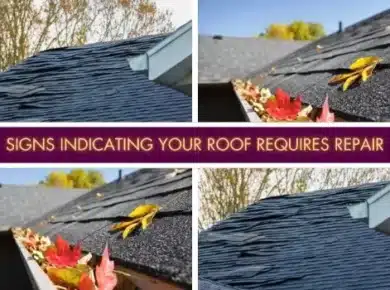When creating a sustainable and environmentally friendly home, it’s not just about the interior. The exterior of your property also plays a significant role in energy efficiency, water conservation, and overall sustainability. By making eco-friendly improvements to your house’s exterior, you can reduce your environmental impact, save on utility bills, and create a more beautiful and sustainable living space. This article will explore six tips on how to build sustainable houses to level up your house exterior for sustainability.
1. Embrace Solar Power

Harnessing the sun’s power is one of the most effective ways to make your house’s exterior more sustainable. Install solar panels to generate clean and renewable energy. Solar power can meet your electricity needs, reducing your dependence on fossil fuels, lowering your carbon footprint.
According to the solar professionals affiliated with hdssolar.uk, the solar installations pay for themselves in 8-10 years, and you can save up to 70% on your electricity bill. By investing in solar energy, you save money on your utility bills and also contribute to a greener future.
2. Opt for Sustainable Landscaping
Transforming your outdoor space into a sustainable landscape enhances your property’s beauty and minimizes environmental impact.
- Start by choosing native plants that are well-adapted to your region’s climate and require less water, fertilizers, and pesticides. Native plants support local biodiversity and help conserve water resources.
- Additionally, consider installing a rainwater harvesting system to collect and reuse rainwater for irrigation. This reduces the demand for treated water and reduces runoff, which can cause water pollution.
- When installing a rainwater harvesting system, ensure it adheres to local water regulations. Some jurisdictions require a permit or license for harvesting and storing rainwater.
3. Install Energy-Efficient Lighting

Outdoor lighting is essential for safety and aesthetics, but it can consume significant energy. Upgrade your house exterior lighting to energy-efficient LED (light-emitting diode) lights. LED lights use less energy, have a longer lifespan, and produce less heat than traditional incandescent bulbs.
By making this practical switch, you can reduce energy consumption and lower your electricity bills. Additionally, consider installing motion sensors or timers to automatically control outdoor lighting, ensuring lights are only on when needed. Motion sensors will also provide added security.
4. Implement Water-Saving Measures
Conserving water is crucial for sustainable living. Incorporate water-saving measures into your house exterior to minimize water waste.
- Install low-flow irrigation systems, such as drip irrigation or soaker hoses, to provide water directly to the plant roots with minimal evaporation or runoff.
- Consider native plants adapted to your climate and require less water.
- Group plants with the same water need together to optimize irrigation.
- When you group plants, you can water them all at once instead of individually.
- Furthermore, consider installing a rain barrel or underground cistern to collect rainwater for outdoor use, such as watering plants or washing your car.
- A rain barrel can reduce your water bill and conserve freshwater resources.
5. Choose Sustainable Building Materials
If you intend to upgrade or renovate your house exterior, choose sustainable building materials. Choose materials with a lower environmental impact, such as reclaimed wood, recycled plastic composite decking, or locally sourced stone. Reclaimed wood is an excellent option for decks, fences, and other outdoor structures.
It requires less energy to produce than new wood and helps reduce deforestation. Recycled plastic composite decking is also an excellent choice; it looks like natural wood but lasts longer with minimal maintenance. Lastly, using locally sourced stone saves energy by reducing transportation costs and helps support local businesses. These materials reduce the demand for new resources and minimize waste.
Additionally, look for certified products like Forest Stewardship Council (FSC) certification for wood or Cradle to Cradle certification for eco-friendly and recyclable materials. With these certifications, you are confident that the materials are responsibly sourced.
6. Enhance Insulation and Window Efficiency
Your insulation’s effectiveness is largely determined by the installers’ skill. It’s always advisable to hire a professional such as iFOAM in Keller, TX to ensure the job is done correctly and efficiently, leading to enhanced energy efficiency and increased comfort in your living space.
Improving insulation and upgrading windows can significantly improve the energy efficiency of your house exterior. Proper insulation helps to maintain a comfortable indoor temperature, reducing the need for excessive heating or cooling.
Upgrade your exterior walls, roof, and foundation insulation to minimize heat loss during the winter and heat gain during the summer. Consider installing energy-efficient windows with double or triple glazing and low-emissivity (low-E) coatings. These windows reduce heat transfer and provide better insulation, saving energy and improving comfort.
Conclusion
Upgrading your house exterior for sustainability is a worthwhile investment that benefits the environment and your wallet. By embracing solar power, opting for sustainable landscaping, installing energy-efficient lighting, implementing water-saving measures, choosing sustainable building materials, and enhancing insulation and window efficiency, you can significantly impact the environment while creating a more sustainable and cost-effective living space. Embracing sustainability is not just a trend but a crucial step toward a greener and more sustainable future. So, think green and start transforming your house exterior today.






